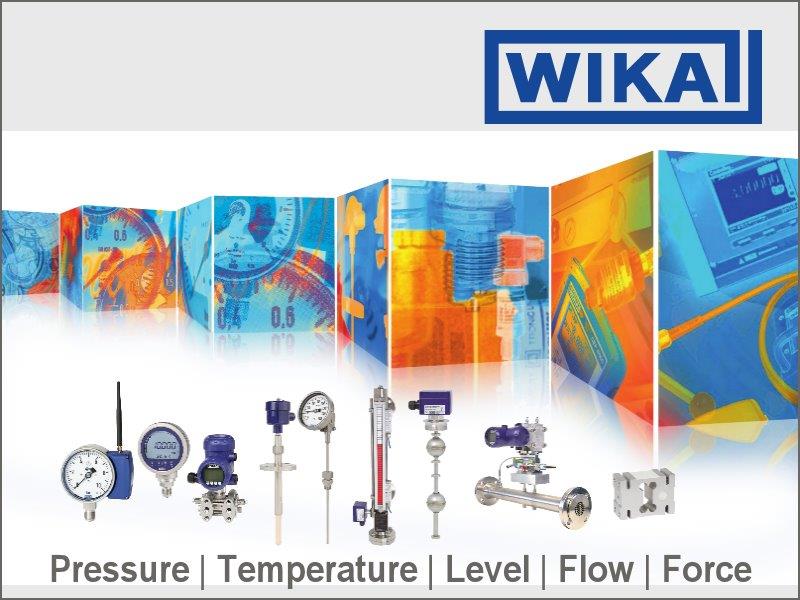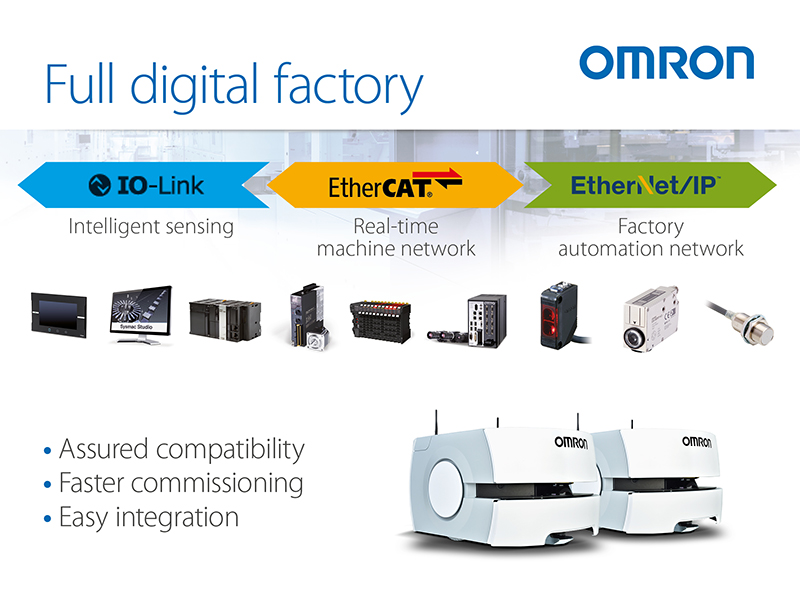Implementing artificial intelligence in industrial manufacturing
In the manufacturing arena, people and machines tend to have a symbiotic relationship – they depend upon each other for their performance and for future improvements. People are increasingly making better machines – most recently through the use of affordable and innovative automation solutions, based upon more powerful hardware and software. These enhanced machines in turn help people to be more productive, bringing advantages to the wider society by providing more and more value higher up in the value chain.
Artificial intelligence and the cloud vs the edge
Two technological advances that are playing a vital role in the improvement of machines are cloud computing and edge computing.
Cloud computing – the storage, management and analysis of data that is stored remotely on a server either locally or on the Internet – has become commonplace in a relatively short time. Although it has proved invaluable in many circumstances, is it always the best solution for businesses – and in particular, for the production line? Recently, another promising alternative has emerged: edge computing.
Edge computing enables data storage, applications and analysis to be carried out at the edge of a machine. Whilst there are various interpretations about what edge entails, data mining at the edge and be compared to a spinal reflex. Lines and devices are monitored with real-time sensors, and data at the machine level can be processed in microseconds. A machine’s condition can be monitored in real time, but the data volume is limited. Real-time data processing at the edge also enables an immediate response.
Industrial manufacturers need to think carefully before deciding on which of these two options will be the most effective, taking into account the recent arrival of new solutions involving artificial intelligence (AI) and machine learning (ML). Omron has demonstrated how AI can be incorporated into machines by developing FORPHEUS, the world’s first robot that can play and train people in table tennis.
FORPHEUS embodies Omron’s three-fold philosophy for innovative automation: integration, interaction and intelligence (specifically AI). The robot uses its cameras and sensors to observe the mood and movements of the player and the ball. It can then rapidly analyse this data to anticipate how the opponent will hit the ball and its trajectory, so that it can then hit the ball back. By assessing how its opponent plays, it can determine their skill level and modify its own play so that its opponent has a challenging game. This is an example of how smart machines could be used to train and assist people in the manufacturing industry, making the most of their potential.
However, although AI offers some great potential benefits, care needs to be exercised before incorporating it into industrial applications. All too often, companies can be eager to start implementing and using it without being fully aware of the challenges they could face.
So, what are the key issues involved in deploying AI and in determining how AI can improve a production line or a process, and if cloud computing or edge computing should be implemented?
Issue 1: What’s your problem?
The biggest challenge that companies face is that they often don’t know what problem they want to solve. Some of them aren’t measuring any data yet, so even though they might be keen to implement AI, this will prove difficult without the necessary data. The solution is to start collecting and cleaning data first, before even thinking about introducing AI. You can then start trying to obtain information from the data and then begin visualising this in a smart way. This is basic data science and will help your company to start realising a range of benefits.
One difficulty here is that a lot of existing data isn’t suitable for analysis, as it’s contaminated, duplicated or scattered, or there is key information missing. There is huge potential for the use of new technology, but you can only use it if the data you’re gathering is both sufficient and correct (which involves making sure a lot of attributes are right). If you’re starting to think about AI, you also need to think in a broader sense about data science and what and how much data you need before coming to a conclusion. Even then, you will need a substantial amount of data if you want to reach the right conclusions.
The next step is to consider implementing AI. You can apply AI at various levels, depending on the problem you want to solve. For instance, if you want to compare the performance of two factories, you can gather the data and put it into the cloud (inside or outside your enterprise), and then you can compare and analyse the data and start to draw conclusions.
At the other end of the spectrum, you might want to analyse the performance of a machine that isn’t meeting your full specifications. This can be difficult in a mass production scenario. For example, a manufacturer who is providing parts for the automotive industry might need to generate 100,000 items per day, that need to be delivered ‘just in time’ to the customer, so that they can be built into cars the next day. If it takes two weeks to analyse the quality data to discover that the product isn’t meeting the specifications, this could delay the identification of an issue that could then lead to an extensive product recall.
This is therefore a completely different problem that needs solving. It can’t be solved in the cloud, as it can take hours or days to collect the data there and analyse it. Instead, you need a solution that will run in your machine and that can identify a low-quality pattern before the 100,000 items are even shipped, or before they are even produced to avoid scrap. This is where edge computing is very useful.
The main challenge remains: what problem do you want to solve? A company with strong, top-level management should know the key challenges that it faces and will want to use the most effective tools that will optimise its performance. The problems you face will determine what you need to do. For instance, do you need to look wide, at a lot of data? If you want to compare a large amount of data from 20 factories, this is where AI in the cloud can play a key role. If you need an immediate reaction on a bottling line for example to avoid downtime, you should consider a solution with AI at the edge.
Issue 2: How can you access and make the best use of your data?
The machines within a factory are a potential source of valuable data. But how can users access and analyse the data that a machine could provide? How can a manufacturing plant then make the most effective possible use of this data, especially when introducing AI to enhance its capabilities? The key questions that need to be addressed from the start are:
- The data: Do I have enough data – and if so, which data is the most relevant and how will it be used?
- The infrastructure: How much will the infrastructure cost?
- The outcomes: What problem do I really need to solve and what increase in efficiency can be achieved by the use of cloud or edge computing?
Some manufacturing facilities might decide to send all data to the cloud. Large IT companies are promoting the cloud as the solution to everything. However, it isn’t a complete panacea, as it doesn’t show or respond in real time to what is actually happening in the machines. This is why Omron decided to focus on this area. We’ve been developing tools to help the human brain to cope with the challenges of what is happening inside the machines – along with details of downwards analysis and pattern recognition.
As one of the potential drawbacks of using cloud computing in the factory, is that it can be difficult to gain a true picture of the real-time performance of equipment. There is no way of looking inside the machine to see what is happening.
However, in edge computing within an industrial manufacturing environment, you can look at the actual process within the machine. Real-time data processing at the edge enables an immediate response to an abnormal situation in a process. With AI at the edge, manufacturers can control complexity and security. To translate information into action, manufacturers need efficient control and monitoring for a more natural, proactive relationship between operator and machine.
With edge computing, the data and the computing resources are located close to the machines. This enables users to gain real-time information about the efficiency of different aspects of their industrial automation system. This means that they can access intelligence within the machine, which in turn enables deep analysis to be carried out.
This information is both scalable and measurable and enables the factory to achieve a significant increase in its overall equipment effectiveness (OEE). Manufacturing companies are increasingly recognising that AI can make a major contribution to their profitability by increasing their OEE, which in turn will lead to greater productivity and lower costs.
In this way, AI can contribute to direct and immediate results, because the intelligence is incorporated within the machine rather than being located elsewhere. Users can focus on potential issues in the process, using the real-time data from the system and its components.
Omron’s AI Controller has some pre-programmed tools that can help with simple cases of preventative maintenance. Using advanced mathematics, it can detect a problem or a deterioration in part of the equipment before a machine breaks down. However, with more complicated machines and with problems which involve more detailed use of AI, currently you will need specialists with advanced skills (such as data scientists and software engineers) if you want to extract the maximum value from this new technology.
Issue 3: How secure is your data?
In terms of understanding what is happening in machines in a manufacturing environment, cloud computing is a simplistic approach that is often insufficient to meet the needs of the latest technology and machines for several reasons.
Using the cloud can cause problems in terms of security, particularly in relation to compliance with the latest IEC 62243 cyber security standards. These are becoming increasingly important in industrial situations, and relate to the security, safety and integrity of the components and systems used within industrial automation programmes.
In contrast, edge computing within the factory provides another level of security, as the data resides within the machines. The whole industrial automation process can be secured using solutions such as intruder detection, video monitoring and access control systems.
Conclusions
In a traditional machine control environment, it has been impossible to programme a machine to recognise micro-second skill patterns in the local data that might be entering it. Potentially all machines have this information but until recently it has been ignored. However, the introduction of AI solutions at the edge inside the machine now provides you with tools that enable you to look at that data. Advances in technology mean that you can have machine control equipment that will process that data and recognise patterns within it.
Although edge computing has some distinct differences from cloud computing in the manufacturing arena, it doesn’t have to be a complete substitution for cloud computing – the two can co-exist as they complement each other in many ways. In some situations, computing might take place in the cloud and then be transferred to edge devices.
Which is the most effective solution for a factory that is starting to use AI – cloud computing or edge computing? Both have a valuable role to play in manufacturing, but it seems clear that in terms of using AI in the production line, edge computing really does appear to have the edge…
Laetitia de Jager
Omron Electronics (Pty) Ltd
Tel. +27 11 579 2600
info.sa@eu.omron.com
www.industrial.omron.co.za












